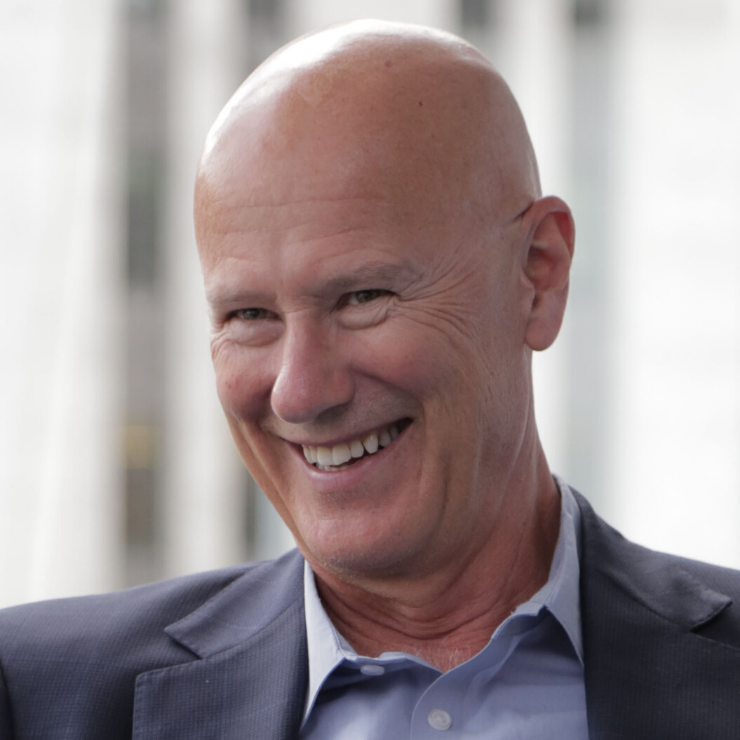Using Behavioral Interviewing to Hire
Jul 07, 2019

6-min read
Jay Batson is a current Techstars mentor and former founder of Acquia who currently employs 750 people worldwide. We asked him to give us his best advice on how to properly interview, evaluate, and make the right hire for your company. “People are hired for what they know, and fired for who they are.” John F. Beehner
This proverb sounds simple; in fact, it obscures one of the most important things a startup (or, any business) must do: Hiring people that are the best fit.
One of the most important things a startup needs to do is hire people who are a great fit—for the company as well as for the role. After all, when a company is made up of just a few people, adding a new one to the mix can dramatically change the character of the organization, as well as having a big impact on how much you can accomplish and how fast it gets done.
The stakes of hiring badly
One bad hire could be fatal to your company. It will probably take six months for you to accept the fact that you (all) made a mistake hiring this person. Then it takes 2-4 months to figure out how to move them out of that job (or the company), then another 2-4 months to find & hire a replacement.
In the meantime, your company has burned through most of the cash you raised in your angel / seed round, and you may have failed to meet your next crucial milestones. Now, you need more cash—without having met your goals. The stakes are incredibly high.
You’ve probably seen the cases of a “bad fit,” where you had a co-worker / subordinate / boss who was (saying it politely) “sub-optimal.” At best, the person was merely ok—essentially ineffective in their role. But at worst, this kind of bad-fit person may have pulled down your entire team (or company!).
Consider if your first salesperson, or your product team lead, was bad. How did this happen? Lots of people - probably including you - interviewed this person, and all believed the candidate would be a great addition to your team. After all, they were personable, seemed like somebody you’d want to be around, and had the requisite experience.
How to hire well
Never fear! There is a way to minimize this risk: Behavioral Interviewing.
The bedrock principle I hope you’ll learn is this: “The best predictor of future success is past behavior.” This is distinctly different from a candidate having experience in, or knowledge of, a type of role.
Take our example of your first sales person. All sales people do the same thing: talk to customers. But how they do it varies dramatically:
Enterprise sales roles require a person who thrives on relationships. This person starts by learning the names and birthdays of every prospect’s children, or the prospect’s average cycling speed on a 60-mile charity bike ride, plus the names (and motivations) of every person in a decision making chain for a $100,000+ sale.
Inside sales roles require a transactional orientation - one that thrives on the immediacy of (winning) monthly sales competitions, knows how to read a customer’s buying interest quickly, and immediately move on to the next lead if appropriate - instead of beating a dead horse.
This is just a polarized, intentionally-obvious example. In reality, knowing what you need is likely to be much more difficult. Which does your company need?
Making hiring a process
Here’s the key to Behavioral Interviewing: Identifying, and interviewing for, the behaviors you want in a given role.
Rarely is there any rigor to how hiring is done in early-stage companies. Most founders / hiring managers typically to come up with a list of “what we’re looking for” by sitting with their team for a few minutes & dreaming up a list of qualifications; almost never are those turned into penetrating questions. And then the interviewers are free to add all of their favorite “job interview questions”.
This is why bad hires are so infuriatingly common. Let’s tackle fixing each of those two things:
Get smart about what kind of person you are searching for. Surprise: You may not actually know what you ought to be looking for - even if you’re an experienced manager. If you take nothing else away from this post, know this one thing: You will reduce the risk of a bad hire if you talk to 5-10 other people who have hired someone similar to whom you’re seeking, and ask them the following question: “Who was the best person you ever hired for (fill-in-the-role-type), and why?”You are virtually guaranteed to get back a response that describes a handful of behavioral characteristics. Without question, this will be the most useful time you spend in your hiring process. And this - instead of sitting with your team for 5 minutes - is much more likely to create for you a better list of things you want to look for in candidates.
Write good interview questions. Now that you know the behaviors for which you are searching, you need a way to discover if a candidate possess them. Write interview questions that sound like “Tell me about a time when you…”. Design them to identify the behaviors you are seeking. Assume you’re seeking the relationship-driven enterprise sales lead; in this case, you could ask “Tell me about your most successful sales engagement. What was it, and why do you think it was so good?” This question allows you to probe the way the person sells, and even ask follow-up questions surrounding how they nurture sales relationships.
How to evaluate an interviewee
When conducting the interview, don’t let your candidate reply with things like “I think a salesperson should ___”. A reply like this might simply be book or peer knowledge being repeated back to you based on what the candidate thinks you are seeking.
Instead, look for a “STAR” response - a specific “S”ituation or “T”ask, the “A”ction they took, and the “R”esult. This is the key moment for you to discover whether this person behaves the way you are seeking. Take time on these important questions; probe for their actual, native behavior, not their knowledge of what they think you’re seeking. Example questions here might be “What did you actually do?” “What were you thinking?” Can you walk me through what happened next?” “How did you react?” “What was the result?"
Deciding who to hire
After all your team has interviewed the candidate, make sure everyone gives the candidate an overall grade: A-F. Then, discuss as a group. And in a manner similar to engineering story “scrum” discussions, talk out why each person had a different grade, and see if you can come to a consensus.
When you’re done, was a candidate an “A”? If not, KEEP LOOKING. You are not done with the process yet. Remember - the cost of a weak hire is a year of velocity. You will get further if you keep looking for another 30-60 days to find an awesome, “A” candidate than hire a B candidate now.
Wrap-up
In an era where engineering teams have Agile/Scrum, and inbound marketing is a science, it is surprising that startups are not treating hiring with as much rigor as those.
But Behavioral Interviewing can be that process. It has worked super well among those Techstars startups that use it (and who have stuck with it!).
If you want to hear the full one-hour presentation provided to the Techstars Boston cohort every year, go here to view it.
About the Author

Jay Batson
Jay has been a founder of 4 companies, including 2 venture-backed startups, with some big success and disappointing failure. Having spent the last 30 years as either a founder or an employee, he now helps startups as a mentor and angel investor.
